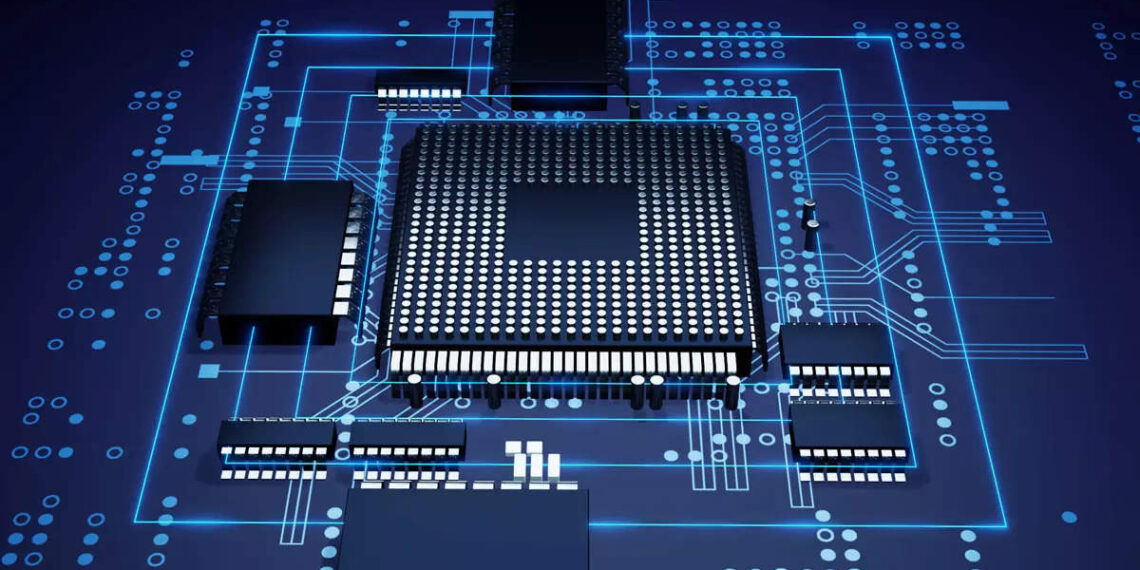Semiconductors, or chips, are the essential components of modern electronics, from smartphones and computers to cars and weapons. They are also the key drivers of innovation and economic growth in the digital era. However, the global semiconductor industry is facing fierce competition between the US and China, two superpowers that are vying for technological supremacy and geopolitical influence. This competition has escalated into a chip war that has profound implications for the world.
Causes of the Chip War
The chip war between the US and China has multiple and interrelated causes. One of them is the strategic rivalry between the two countries over their respective roles and interests in the Asia-Pacific region and beyond. The US sees China as a rising challenger that threatens its leadership and security, while China sees the US as a declining hegemon that seeks to contain its rise and development. This rivalry has manifested in various domains, such as trade, military, diplomacy, human rights, and technology.
Another cause of the chip war is the divergence of the two countries’ technological capabilities and ambitions. The US has been the global leader in semiconductor innovation and design for decades, but it has outsourced most of its chip manufacturing to its allies in East Asia, such as Taiwan, South Korea, and Japan. China, on the other hand, has been a major consumer and importer of chips, but it has lagged behind in chip innovation and production. China has made it a national priority to develop its own semiconductor industry and reduce its dependence on foreign suppliers.
A third cause of the chip war is the interdependence and vulnerability of the global semiconductor supply chain. The chip industry is highly complex, specialized, and integrated, involving multiple actors across different countries and regions. However, this interdependence also creates risks and challenges for the industry, such as geopolitical tensions, trade disputes, natural disasters, pandemics, cyberattacks, and market fluctuations. These risks and challenges have exposed the fragility and imbalance of the supply chain, especially for critical components and materials.
Consequences of the Chip War
The chip war between the US and China has significant consequences for both countries and the world. One of them is the disruption of the global semiconductor supply chain and market. The US has imposed various export controls and sanctions on Chinese chip companies and entities, such as Huawei, SMIC, YMTC, Hikvision, DJI, etc., restricting their access to US technology and equipment. These measures have affected not only Chinese firms but also their suppliers and customers around the world. The chip war has also contributed to the global chip shortage that has plagued various industries since 2020.
Another consequence of the chip war is the acceleration of technological decoupling and fragmentation. The US and China have both taken steps to enhance their domestic chip capabilities and reduce their reliance on each other. The US has launched initiatives such as CHIPS for America Act, Trusted Foundry Program, National Semiconductor Technology Center (NSTC), etc., to boost its chip research, development, manufacturing, and security. China has invested heavily in its chip industry through policies such as Made in China 2025 (MIC 2025), National Integrated Circuit Industry Investment Fund (Big Fund), etc., to support its chip design, fabrication, packaging, testing, equipment, and materials. These efforts have led to a bifurcation of the global chip ecosystem into two competing blocs.
A third consequence of the chip war is the intensification of military competition and conflict potential. Chips are vital for advanced military applications such as artificial intelligence (AI), hypersonic weapons, stealth fighters, satellites, etc., that can enhance or undermine deterrence and escalation in a crisis or war scenario. The US and China are both developing and deploying such applications to gain an edge over each other in the Asia-Pacific region and beyond. The chip war has increased the incentives and pressures for both countries to secure and protect their chip sources and capabilities, especially in Taiwan, which is home to TSMC, the world’s largest and most advanced chip maker. Taiwan is also a flashpoint for potential military conflict between the US and China, as Beijing claims sovereignty over the island, while Washington supports its autonomy and security.
Challenges of the Chip War
The chip war between the US and China poses several challenges for both countries and the world. One of them is how to balance competition and cooperation in the semiconductor industry. While competition can spur innovation and efficiency, it can also lead to wasteful duplication, excessive protectionism, and harmful confrontation. Cooperation, on the other hand, can foster mutual benefits, cost savings, and risk mitigation. However, it can also entail trade-offs, compromises, and vulnerabilities. Finding an optimal balance between competition and cooperation in the chip industry requires strategic vision, pragmatic dialogue, and constructive engagement among all stakeholders.
Another challenge is how to manage the risks and uncertainties of technological change in the semiconductor industry. The chip industry is constantly evolving with new technologies, materials, architectures, and applications that can create new opportunities or challenges for different actors. For example, the emergence of quantum computing, neuromorphic computing, or carbon nanotubes could revolutionize or disrupt the existing paradigms of chip design and performance. Managing these risks and uncertainties requires foresight, adaptability, and resilience among all actors.
A third challenge is how to address the ethical and social implications of semiconductor technology. Chips are not only technical devices but also social artifacts that reflect human values, norms, and interests. They can enable or constrain human rights, privacy, security, democracy, equality, etc., depending on how they are designed, used, or regulated. Addressing these ethical and social implications requires awareness, responsibility, and accountability among all actors.
The chip war between the US and China is a complex phenomenon that has multiple causes, consequences, and challenges for both countries and the world. It is not a zero-sum game that can be won or lost by either side but a dynamic process that can be shaped by various factors. It is also not an inevitable outcome that can be accepted or ignored by either side but a critical issue that can be influenced by various actions. Hence, it is important for both countries and the world to understand the nature, scope, and implications of this chip war and to seek ways to mitigate its negative effects and maximize its positive effects for their own interests and for global peace and prosperity.










